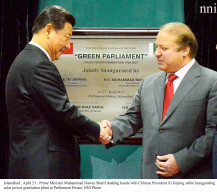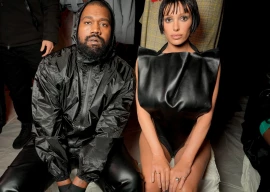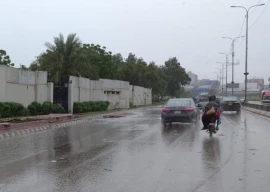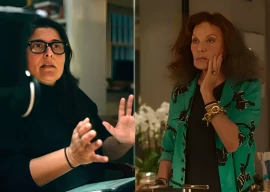
KARACHI:
For the rest of the world, a solar powered oven is not a new phenomenon. In Pakistan, however, not only is the majority unfamiliar with the concept, they are also missing out on how a small investment of less than Rs100 can work as an alternative means of cooking in both rural and urban settlements.
Azad Chaiwala, a researcher based in the UK, has designed a simple form of a ‘solar oven’. A cardboard box, plastic sheeting or glass, paper glue, styrofoam (polystyrene), aluminum kitchen foil, paper glue and black paint are the basic materials needed for this home-made appliance.
According to Chaiwala, who hails from Azad Kashmir, there is no big investment required. “Ninety percent of the materials can be found in any home,” Chaiwala explained to The Express Tribune. “The polystyrene I used was from some old packaging. The plastic serving as a light inlet was actually a toy doll my daughter had recently received as a gift.”
In his sample model, Chaiwala fried an egg by maintaining a temperature at 87 degrees Celsius inside the foil-coated cardboard box. He then covered the lid of the frying pot, placed it inside the cardboard box and finally put the plastic-lined lid on the top the box, positioning the apparatus where it would receive maximum sunlight. “The temperature inside the box can be raised to 100 degrees Celsius, making it suitable for boiling water, pasteurising milk and making tea,” he explained. “The model can be tweaked to increase the temperature according to the requirement. For instance, plastic sheeting can be replaced with glass to minimise heat from escaping. Moreover, mirrors can be used instead of kitchen foil,” said Chaiwala.
The solar powered oven can be used as a substitute in cooking for all those foods that don’t require active stirring.
Is it safe?
Chaiwala believes the appliance poses no threat to human health. “The foil does not pose a risk as there are no microwaves or radiation of any kind,” he explained. “It simply reflects the natural rays of the sun, besides providing that extra insulation for heat retention.”
Moti Khan, a nutritionist at the Aga Khan University Hospital, believed the solar oven model had a lot of potential. “Temperature control in varying external conditions and tweaking the system for optimal functionality can ensure its success in the long run.”
The need to improvise
Chaiwala describes himself as the biggest enemy of Pakistan’s education system, which according to him is focused on ‘useless facts’. “The time can be used to teach practical things to children — scientific concepts that affect us directly,” said Chaiwala.
He also feels the solar oven could become a good venture for anyone who wanted to craft and sell them in the local market. “Restaurants and catering companies all over the world use solar energy for cooking at a larger scale. We have the sun for almost 300 days a year. Why not take advantage of this?”
Published in The Express Tribune, May 20th, 2015.











































COMMENTS (2)
Comments are moderated and generally will be posted if they are on-topic and not abusive.
For more information, please see our Comments FAQ